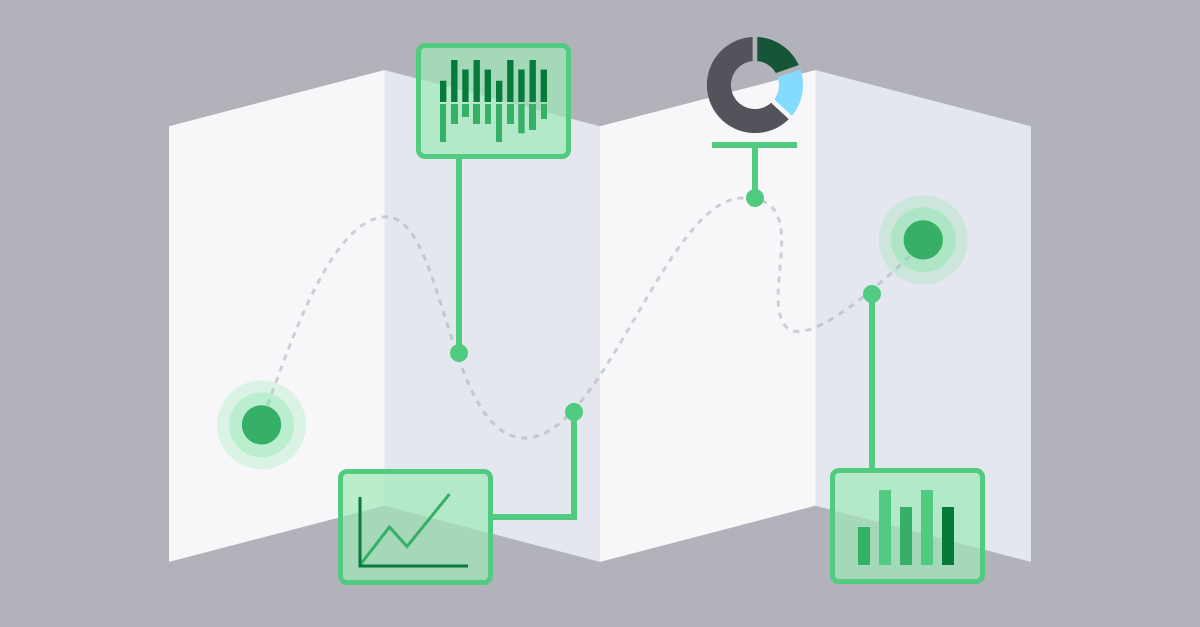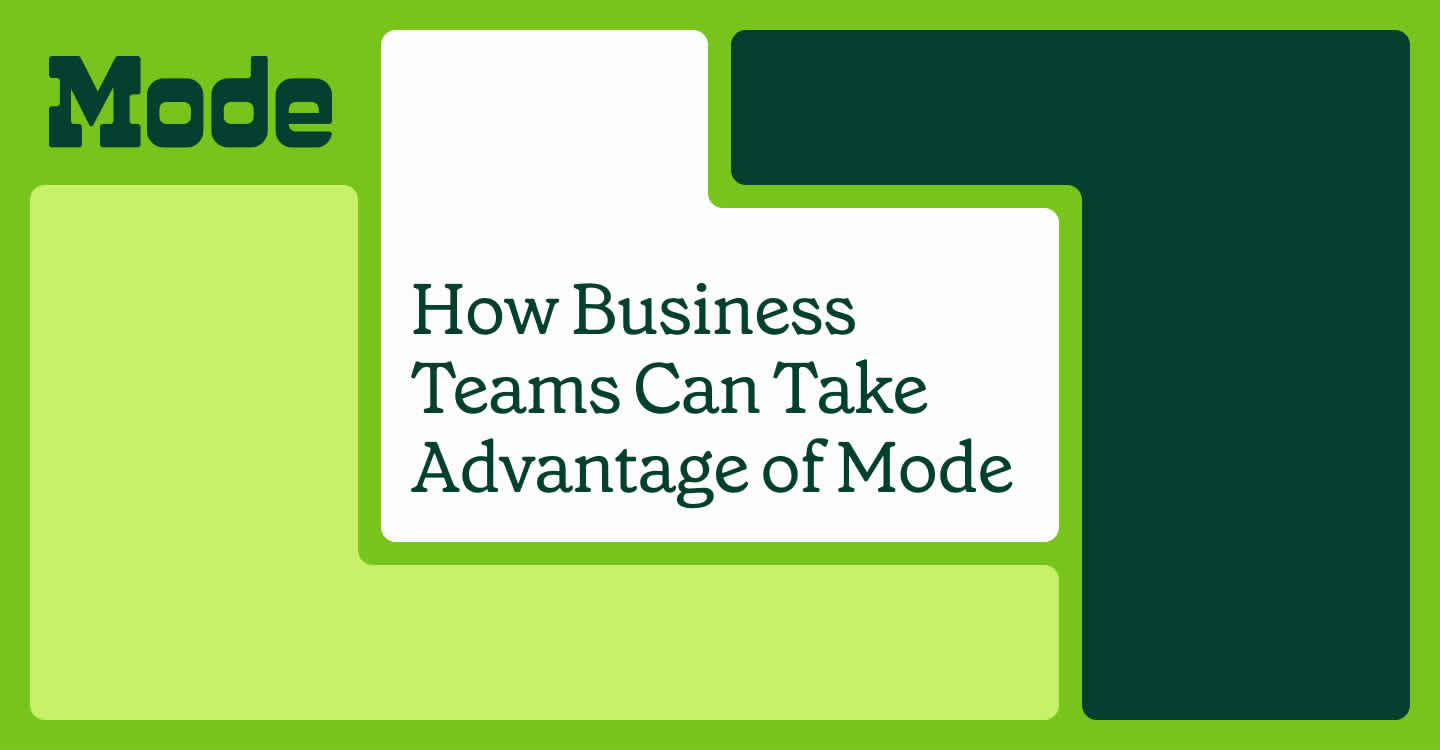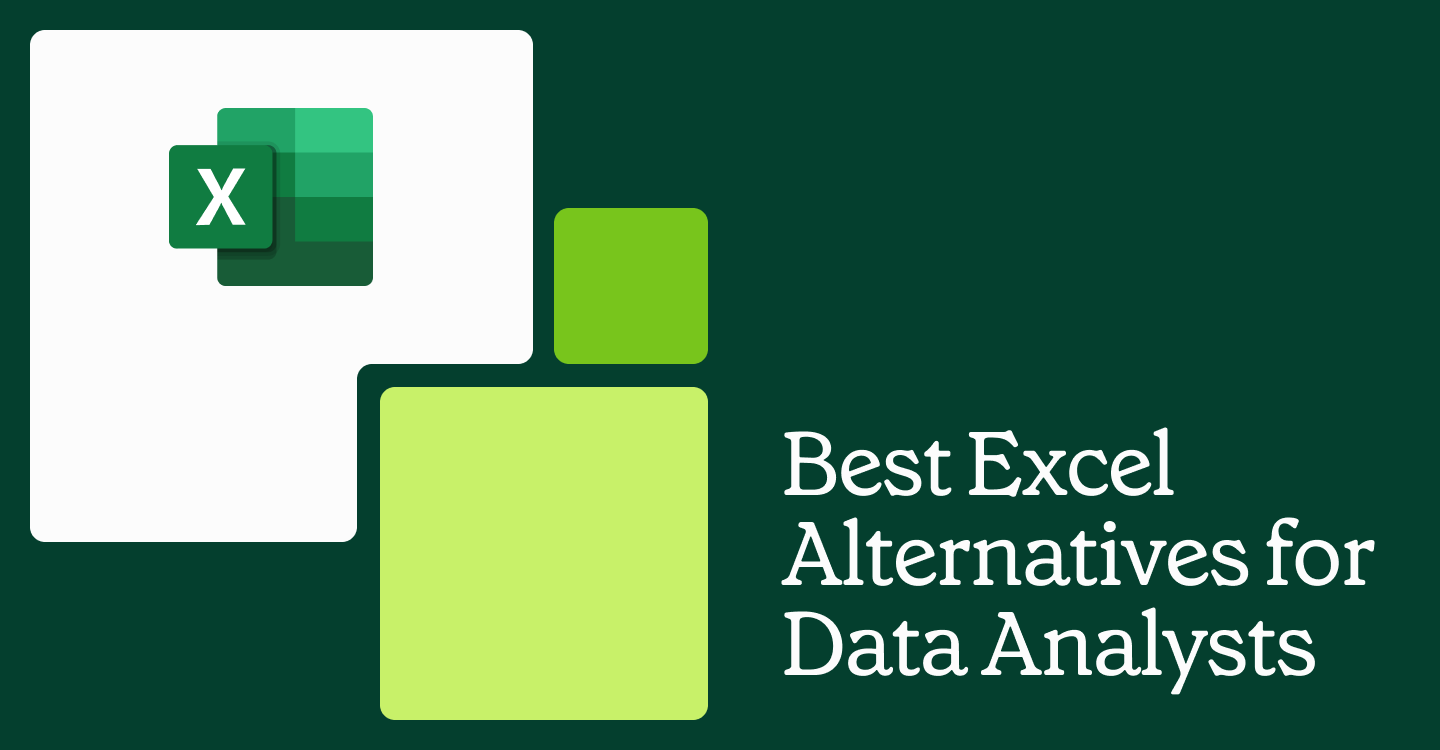Here's Our Take On Prescriptive Analytics and How Helped us Plan Rapidly During the Uncertainty of 2020
Rochel Maday, Mode writer
October 28, 2021
NaN minute read

“A good plan today is better than a perfect plan tomorrow." It’s unlikely that General George S. Patton was referring to data analytics when he coined this phrase in the first half of the 20th century. But his advice is just as applicable to the business world today as it was on the battlefield back then.
Businesses that can quickly plan and implement new strategies tend to outperform their competitors who get stuck in the planning stage. This isn’t a surprising statement. The real question is, how do they do it?
One strategy is to use prescriptive analytics. Albeit not perfect, it accommodates for flexibility, data-driven decision making, and rapid planning.
Being able to quickly leverage data via prescriptive analytics gives businesses the advantage needed to tackle any unprecedented uncertainty, whether it’s a pandemic, a sudden decline in membership, or a surprise uptick in product demand.
What is prescriptive analytics?
Prescriptive analytics is the use of the descriptive, predictive, and human elements of analytics to inform business decisions. When there are rapid economic changes to a business, prescriptive analytics can help us build a more complete picture from multiple types of analysis and expertise from stakeholders to chart a clearer path forward.
Prescriptive analytics uses a framework to suggest a course of action and describe why that course of action is optimal for stakeholders. The framework is informed by stakeholders’ expertise and is part of the human element that makes prescriptive analytics so effective.
At Mode, we believe that data scientists need other experts. As Nate points out, data scientists don’t always have the context they need to solve the problems they’re presented with, and experts in each department can help fill that gap by providing more context, thus strengthening the analysis.
“Prescriptive analytics uses data to suggest a course of action, describe why that course of action is optimal for stakeholders.”
It’s difficult to appreciate prescriptive analytics without understanding its analytical components, predictive, and descriptive analytics.
Descriptive analytics reconfigure historical data into easy-to-read formats to help businesses understand operations and learn from past trends. Think of a bar graph displaying an item’s total sales by calendar month, where it’s easy to see which month sold the least and which sold the most.
Descriptive analytical data is valuable because we can identify possible correlations between past variables. But while findings can serve as a foundational starting point, this type of analytics only tells us what happened, not what will happen next.
This is where predictive analytics comes in. In a predictive analytics approach, patterns are pulled from historical data to show us what could happen in the future. As Nate says, “[You] use known characteristics to predict what the unknown is, or will be. For example, we may want to predict the likelihood of a lead converting to a customer using information about their actions that we’ve collected on our webpage.”
Machine learning and algorithms can be applied to help predict an unknown variable. For example, predictive analytics can help a retailer prepare for the holiday season by analyzing sales data from years prior. Predictive analytics help businesses forecast future trends, needs and potential hurdles.
But a prediction is just that: a prediction, not a guarantee. This type of modeling can be quickly outdated, especially in an ever-changing business environment if it’s been trained on previous or stale data, providing misleading results. And while predictive analytics helps us to see what could happen, it doesn’t answer the questions on how to reach a forecasted outcome, or if it’s the right approach to even take.
Both types of analytics are powerful at face value. But they can also be too limiting. Nate points out that while prescriptive analytics pulls benefits from both descriptive and predictive analytics, it adds in a powerful tool: the human element.
Descriptive + predictive + you = prescriptive analytics
You’re likely already familiar with prescriptive analytics on an everyday level. Think of your geographical location’s weather. You can think back and make note of which months of the year received rain and which remained fairly dry. This is descriptive analytics.
If you then notice data points like dark clouds or the sound of thunder in the distance, you may forecast a storm—similar to how historical patterned information usually tells you what to expect next in predictive analytics.
After considering all available data, you may apply more nuanced context from your own experience—that summer storms only downpour for about 15 minutes before it starts to get warm again. So you may grab an umbrella, and dress in layers before heading out the door. This is a simplified example of applying a prescriptive analytics framework. We’re reminded from Nate that “Deeply understanding the context of a problem is key to providing a good solution.”
When a storm quickly descends on a business, the answer isn’t as simple as a pair of galoshes of course. But Nate believes that prescriptive analytics are an effective method to riding out the storm.
Why is prescriptive analytics important for business?
When businesses tap into the unique advantages of prescriptive analytics, they can better understand and quickly respond to potentially catastrophic setbacks.
Here’s where Patton’s planning comes in. Just as it’s better to understand how to use a lifejacket before a boat starts taking on water, knowing how to use prescriptive analytics before you need saving grace is important. You can’t plan for the interruptions. But you can have an actionable plan in place quickly with prescriptive analytics.
In his webinar, Nate specifically refers to the swift economical change Mode successfully navigated with prescriptive analytics just last year. See if you can relate with our action from last year and visualize your own success.
How Mode used prescriptive analytics
Like so many other businesses, Mode needed to field immediate effects of the COVID-19 pandemic. When we officially closed our offices in March of 2020 and shifted to a remote working environment, we knew we were about to face unforeseen challenges.
Questions about how to proceed weren’t just coming from our executive team either. Customers were wondering if they could defer payment as their cash flows were interrupted. Others were looking to negotiate their contracts as they were forced to restructure their standard services overnight.
We knew data was more important to our customers than ever before, but we weren’t sure of the best route to take to help them.
Lizz Harrell, Mode’s VP of Customer Success, quickly mobilized a team of data partners and customer success reps to determine the impact that COVID-19 shutdowns were having on our customers and revenue. We needed to reassess our customer health scores that reflected the new environmental conditions. After all, the way we previously measured customer health and risk was no longer adequate. Reports that once helped us identify usage trends or growth opportunities wouldn’t show how the pandemic was impacting our customers and their ability to operate.
We moved quickly, knowing that delaying the project would have more consequences than putting out a less-than-perfect framework would. We knew that the economical environment was changing by the second and spending too much time focusing on one set of data would quickly lead to an outdated analysis.
To compile our data, we focused on three key categories of customer health.
Firmographic
- How much exposure individual customers and segments had to the ever-changing economic environment
Account
- How engaged a customer was with Mode; what value could we offer them that would have the most impact for their unique setbacks?
Product usage
- How customers were using Mode differently and how their usage impacted retention and revenue
Once our framework was complete, we were able to create a new health model and score. It took less than two weeks to create a fully explorable and dynamic health scoring model using a prescriptive analytics framework. By collecting data that made it easy to see what our customers were struggling with, predicting what both our and our customer’s futures could look like, and using a human element to give this data a story, we were able to:
Forecast key retention and revenue targets
Make strategic decisions based on new intake of live daily data
Gain new perspectives into our segments and customers
Build out our model’s infrastructure to continue gaining unique insights on customer trends
Best practices for prescriptive analytics
Prescriptive analytics are a powerful tool. But to make sure you’re getting all you can from your data, here are a few helpful tips from Nate.
Keep the conversation going
Speed is important when developing a prescriptive analytics framework. Nate suggests embedding your analytics team with your business stakeholders. This keeps the conversation on data going so everyone stays on the same page as the environment changes.
Be transparent
Be open and transparent while building your prescriptive analytics framework. Be willing to hear feedback and adapt as needed. Data analysis takes a collaborative team.
Perfection is never the goal
When it comes to prescriptive analytics, a perfect tool doesn’t exist. Progression never fades, so rather than over-engineering a problem, implement analysis that gets you 80% of the way to a solution.
Prescriptive analytics helps teams choose the best path forward
When your business is facing a turbulent economic climate, decisions critical to your business’ survival need to be made quickly. By combining the strengths of descriptive and predictive analytics with guidance from human elements, businesses can use prescriptive analytics to make faster, smarter decisions.
At Mode, we offer faster and deeper analytics in a single platform so that businesses can quickly come up with goals, strategies, and even calamity plans. Learn more about our platform here
Get our weekly data newsletter
Work-related distractions for data enthusiasts.




